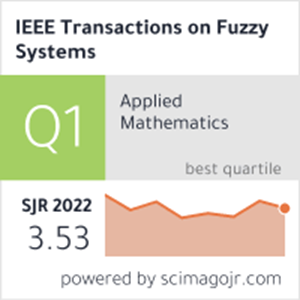Fuzzy Recurrent Stochastic Configuration Networks for Industrial Data Analytics
IF 10.7
1区 计算机科学
Q1 COMPUTER SCIENCE, ARTIFICIAL INTELLIGENCE
引用次数: 0
Abstract
This article presents a novel neuro-fuzzy model, termed fuzzy recurrent stochastic configuration networks (F-RSCNs), for industrial data analytics. Unlike the original recurrent stochastic configuration network (RSCN), the proposed F-RSCN is constructed by multiple subreservoirs, and each subreservoir is associated with a Takagi–Sugeno–Kang (TSK) fuzzy rule. Through this hybrid framework, first, the interpretability of the model is enhanced by incorporating fuzzy reasoning to embed the prior knowledge into the network. Then, the parameters of the neuro-fuzzy model are determined by the recurrent stochastic configuration (RSC) algorithm. This scheme not only ensures the universal approximation property and fast learning speed of the built model but also overcomes uncertain problems, such as unknown dynamic orders, arbitrary structure determination, and the sensitivity of learning parameters in modeling nonlinear dynamics. Finally, an online update of the output weights is performed using the projection algorithm, and the convergence analysis of the learning parameters is given. By integrating TSK fuzzy inference systems into RSCNs, F-RSCNs have strong fuzzy inference capability and can achieve sound performance for both learning and generalization. Comprehensive experiments show that the proposed F-RSCNs outperform other classical neuro-fuzzy and nonfuzzy models, demonstrating great potential for modeling complex industrial systems.工业数据分析中的模糊递归随机配置网络
本文章由计算机程序翻译,如有差异,请以英文原文为准。
求助全文
约1分钟内获得全文
求助全文
来源期刊

IEEE Transactions on Fuzzy Systems
工程技术-工程:电子与电气
CiteScore
20.50
自引率
13.40%
发文量
517
审稿时长
3.0 months
期刊介绍:
The IEEE Transactions on Fuzzy Systems is a scholarly journal that focuses on the theory, design, and application of fuzzy systems. It aims to publish high-quality technical papers that contribute significant technical knowledge and exploratory developments in the field of fuzzy systems. The journal particularly emphasizes engineering systems and scientific applications. In addition to research articles, the Transactions also includes a letters section featuring current information, comments, and rebuttals related to published papers.
 求助内容:
求助内容: 应助结果提醒方式:
应助结果提醒方式:


